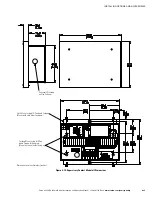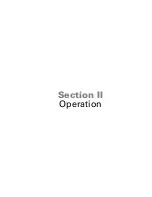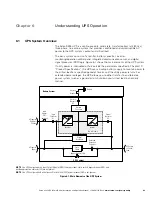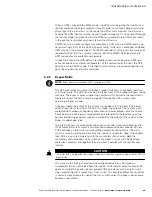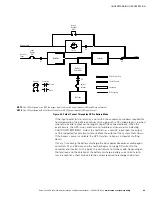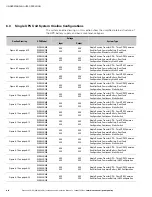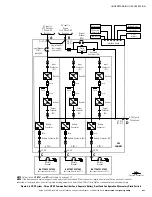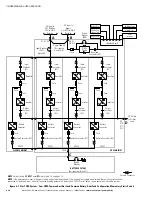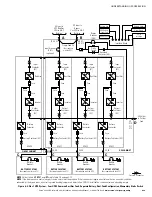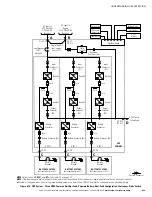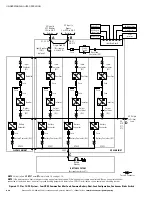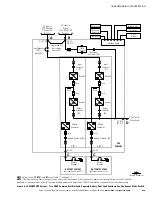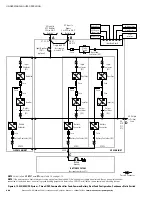
UNDERSTANDING UPS OPERATION
Eaton 9395 UPS (450–825 kVA) Installation and Operation Manual
S
164201725 Rev 4
www.eaton.com/powerquality
6-7
Static
Switch
K5
Rectifier
Inverter
K1
K3
Battery
Converter
Battery
Battery
Breaker
Main Power Flow
Trickle Current
Energized
De-Energized
Closed
Open
Breakers
Contactors
K2
Bypass
Breaker
(CB4)
Bypass Input
Rectifier
Input
Output
Input
Breaker
(CB1
NOTE
On a UPS configured as an IOM, the bypass input, static switch, bypass breaker (CB4), and K5 are not present.
NOTE
On a UPS configured with a Continuous Static Switch (CSS), bypass breaker (CB4) is not present.
Figure 6‐4. Path of Current Through the UPS in Battery Mode
If the input power fails to return or is not within the acceptance windows required for
normal operation, the battery continues discharging until a DC voltage level is reached
where the inverter output can no longer support the connected loads. When this
event occurs, the UPS issues another set of audible and visual alarms indicating
SHUTDOWN IMMINENT. Unless the rectifier has a valid AC input soon, the output
can be supported for only two minutes before the output of the system shuts down.
If the bypass source is available, the UPS transfers to bypass instead of shutting
down.
If at any time during the battery discharge the input power becomes available again,
contactors K1 and K5 close and the rectifier begins to supply DC current to the
converter and inverter. At this point, the unit returns to Online mode. Depending on
the total load and the duration of the battery discharge, battery current limit alarms
may be seen for a short time due to the current required to recharge the battery.





